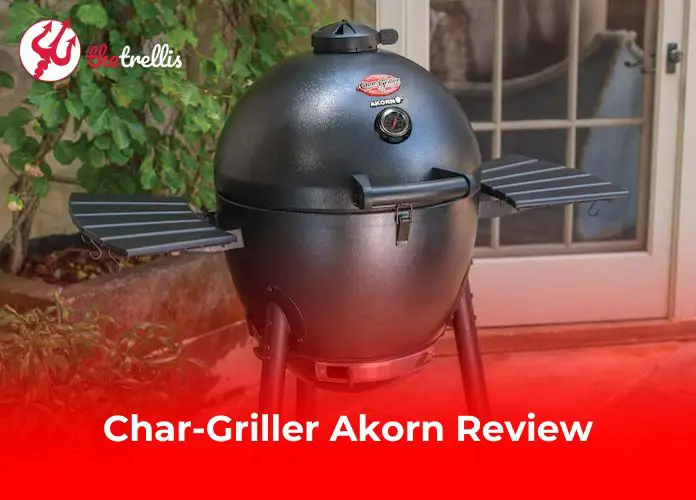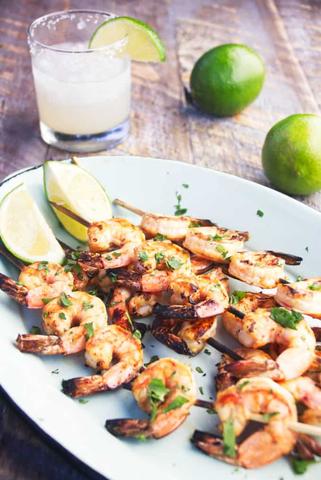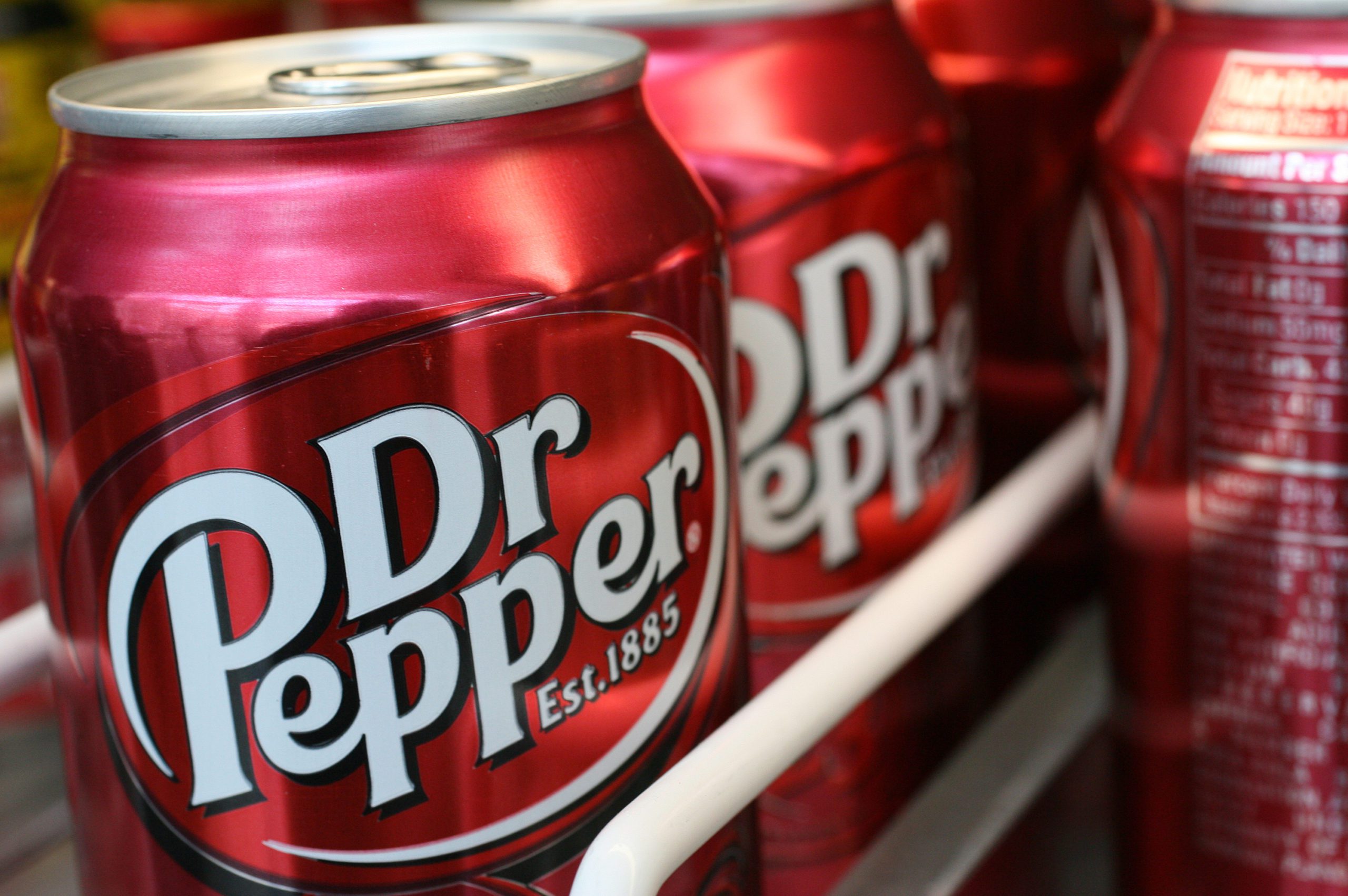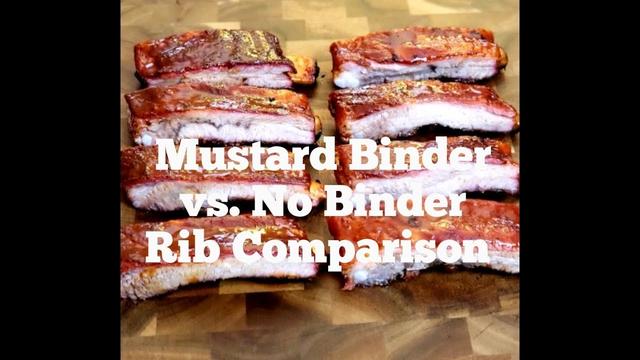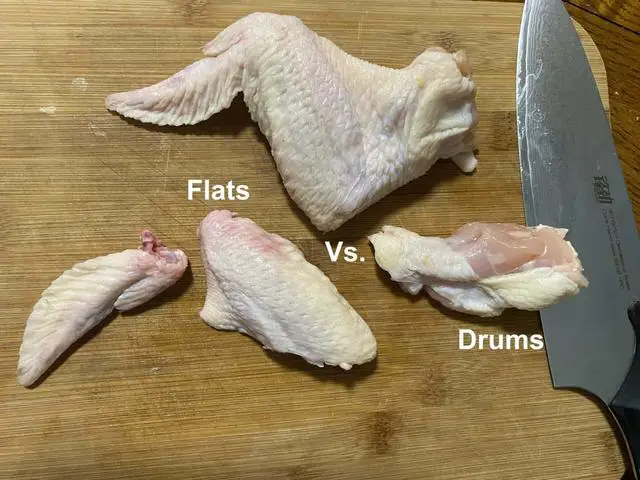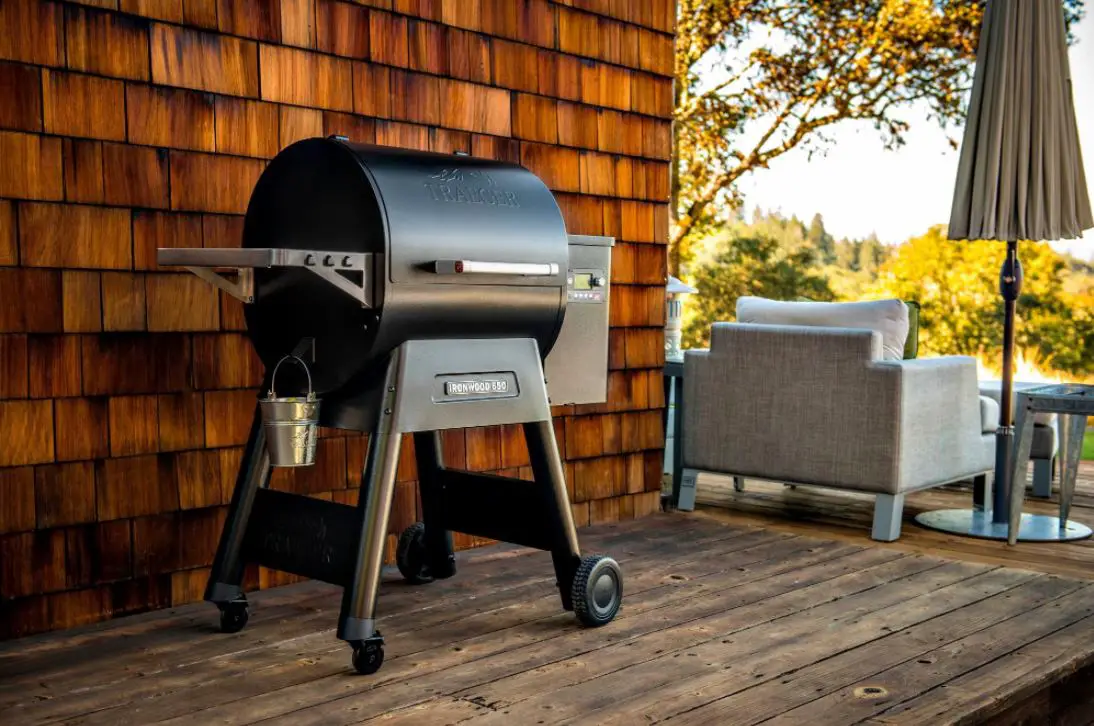
“Discover the ultimate guide to Traeger grills: How long does a full hopper of pellets last at 225°F? Unveiling the optimal cooking duration for your favorite recipes, this detailed analysis will help you maximize your pellet usage and achieve perfectly smoked and grilled dishes every time. Unlock the secrets to longer cook times and savor the smoky flavors with confidence!”
WHAT ARE TRAEGER PELLETS?
Traeger pellets are small, cylindrical pieces of hardwood that are used as fuel in Traeger grills. They are made from 100% natural hardwood and come in a variety of flavors, including hickory, mesquite, apple, and cherry. These pellets burn slowly and cleanly, providing a consistent heat source for cooking meats, vegetables, and other foods. They are free from additives, binders, and fillers, making them safe to use and ensuring they won’t leave any harmful residues on your food.

The lifespan of Traeger pellets depends on several factors. As a general rule of thumb, a 20-pound bag of Traeger pellets can last for around 20 hours of cooking time at 225 degrees Fahrenheit. However, this estimate can vary based on how often you use your grill, the temperature at which you cook, and the size of your hopper. Higher temperatures will cause the pellets to burn faster, while lower temperatures will make them last longer. The size of your hopper also affects pellet lifespan; a larger hopper can hold more pellets and allow for longer cooking sessions without refilling.
To ensure the longevity and performance of your Traeger pellets, it’s important to store them properly. Keep them in a cool, dry place away from moisture and humidity to prevent clumping or mold growth. Purchasing high-quality pellets from a reputable source is also crucial to ensure optimal flavor and performance. Cheap pellets may contain fillers or chemicals that affect the taste of your food and the lifespan of the pellets. Additionally, high-quality pellets produce less ash during cooking compared to low-quality ones.
When choosing Traeger pellets, consider the type of meat you’ll be grilling and the flavor profile you want to achieve. Different pellet flavors work better with specific types of meat; for example, hickory pellets are great for smoking beef, while apple pellets complement poultry and pork. Experimenting with different pellet combinations can lead to exciting new flavor profiles. It’s crucial to purchase high-quality pellets from a reputable source and match your cooking style to the type of pellets you choose. Hardwood pellets burn hotter and faster, making them suitable for high-temperature cooking, while fruitwood pellets burn slowly and provide a subtle flavor ideal for low and slow cooking.
You can tell if your Traeger pellets are bad if they have an off odor or discoloration. Clumping together indicates that they have absorbed too much moisture and are no longer usable. Proper storage and regular inspection of your pellets will help you identify any signs of spoilage or degradation.
HOW LONG DO TRAEGER PELLETS LAST?
Traeger pellets are designed to burn slowly and cleanly, providing a consistent heat source for cooking. On average, a 20-pound bag of Traeger pellets can last for around 20 hours of cooking time at a temperature of 225 degrees Fahrenheit. However, the lifespan of your pellets can vary depending on factors such as the frequency of use, cooking temperature, and the size of your hopper.
The temperature at which you cook plays a significant role in how long your Traeger pellets will last. Higher temperatures will cause the pellets to burn faster, requiring more pellets to maintain the desired heat level. Conversely, cooking at lower temperatures will make your pellets last longer, allowing you to get more cooking time out of a bag.
The size of your hopper also impacts pellet lifespan. A larger hopper can hold more pellets, enabling longer cooking periods without having to refill it. This is especially beneficial for slow and low cooking that takes several hours. On the other hand, a smaller hopper will require more frequent refilling, reducing the overall lifespan of your pellets.
FACTORS THAT CAN IMPACT PELLET LIFESPAN
The lifespan of Traeger pellets can be influenced by several factors, including the temperature at which you cook and the size of your hopper. Higher cooking temperatures will cause the pellets to burn faster, requiring more pellets to maintain the desired heat. Conversely, cooking at lower temperatures can help prolong the lifespan of your pellets. The size of your hopper also plays a role in pellet lifespan. A larger hopper can hold more pellets, allowing for longer cooking periods without needing to refill it. On the other hand, a smaller hopper will require more frequent refilling and may impact pellet lifespan.
It’s important to note that there is no specific timeframe for how long Traeger pellets last as it varies depending on these factors. Finding the right balance between temperature, hopper size, and cooking time through experimentation is key to maximizing pellet lifespan.
TEMPERATURE
The temperature at which you cook on your Traeger grill can greatly impact the lifespan of your pellets. Higher temperatures will cause the pellets to burn faster, requiring you to use more pellets for the same amount of cooking time. On the other hand, cooking at lower temperatures can help your pellets last longer, allowing you to get more cooking time out of a bag. Adjusting the temperature of your grill can help you find the right balance between heat and pellet consumption.
The size of your Traeger hopper is another factor that affects how long your pellets will last. A larger hopper can hold more pellets, allowing you to cook for longer periods without having to refill it. This is especially useful if you plan on doing slow and low cooking, which requires several hours of cook time. Conversely, a smaller hopper will require more frequent refilling, which can impact the lifespan of your pellets.
SIZE OF HOPPER
The size of your hopper can greatly impact the lifespan of your Traeger pellets. A larger hopper has the capacity to hold more pellets, allowing you to cook for longer periods without needing to refill it. This is especially beneficial if you plan on doing slow and low cooking, which typically takes several hours to complete. On the other hand, a smaller hopper will require more frequent refilling, which can affect how long your pellets last. It’s important to consider the size of your hopper when determining how many pellets you’ll need for your grilling needs.
The temperature at which you cook on your Traeger grill also plays a role in how long your pellets will last. Higher temperatures will cause your pellets to burn faster, requiring more pellets to maintain the desired heat level. Conversely, cooking at lower temperatures will help extend the lifespan of your pellets, allowing you to get more cooking time out of each bag. It’s worth experimenting with different temperature settings to find the optimal balance between heat and pellet consumption.
The length of time you spend cooking on your Traeger grill will naturally impact how long your pellets last. If you frequently use your grill for extended periods or multiple cooking sessions, you may find that a bag of pellets doesn’t last as long as expected. On the other hand, occasional use or shorter cooking sessions can help stretch the lifespan of each bag. It’s important to consider your typical cooking habits when estimating how long Traeger pellets will last for you.
The quality of the Traeger pellets themselves can also affect their lifespan. High-quality pellets made from 100% natural hardwood tend to burn more cleanly and efficiently, resulting in less ash production and longer burning times. Cheap or low-quality pellets may contain fillers, binders, or chemicals that can impact the flavor of your food and the longevity of your pellets. It’s important to purchase pellets from a reputable source to ensure that you are getting the best quality and performance for your grilling needs.
Proper storage of your Traeger pellets is crucial for maintaining their freshness and performance. Storing them in a cool, dry place away from moisture and humidity will help prevent clumping, mold growth, and degradation of the pellets. Moisture buildup can cause the pellets to become unusable or affect their burning efficiency. By following proper storage practices, you can maximize the shelf life of your Traeger pellets and ensure that they are ready to use whenever you want to grill.
Ultimately, finding the right balance between temperature, hopper size, cooking time, and pellet quality is a matter of experimentation. Every grill master has their own preferences and cooking style, so it’s important to find what works best for you. Don’t be afraid to try different settings and techniques to discover the optimal conditions for getting the most out of your Traeger pellets. With time and practice, you’ll be able to create delicious, flavorful dishes that your family and friends will love.
STORAGE AND QUALITY CONTROL
Proper storage and quality control are essential factors when it comes to ensuring the longevity and performance of your Traeger pellets. To maximize their shelf life, it’s crucial to store them in a cool, dry place, away from moisture and humidity. This will help prevent any potential moisture buildup, which can cause the pellets to clump or become moldy over time.
In addition to proper storage, purchasing your Traeger pellets from a reputable source is equally important. Cheap pellets may have fillers, binders, or chemicals that can impact the flavor of your food and the lifespan of your pellets. Opting for high-quality pellets ensures that you get the best possible flavor and performance out of your grill.
It’s worth noting that the quality of your pellets can also impact the amount of ash produced during cooking. Low-quality pellets tend to produce more ash, which can lead to more frequent cleaning and maintenance of your grill. By contrast, high-quality pellets burn more cleanly and efficiently, producing less ash and reducing the amount of cleaning you need to do.
TIPS FOR SELECTING THE RIGHT TRAEGER PELLETS FOR YOUR GRILLING NEEDS
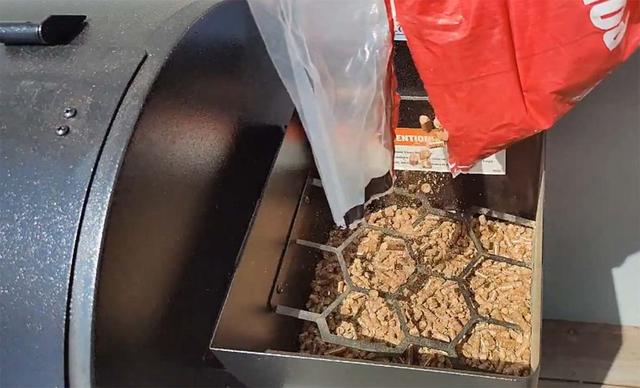
Traeger pellets are an essential component of any Traeger grill setup. Made from 100% natural hardwood, these pellets come in a variety of flavors that can impart a unique taste to your dishes. When selecting your pellets, consider the type of food you will be grilling and the flavor you want to achieve. Hickory pellets are perfect for smoking beef, while apple pellets work well with poultry and pork. Mesquite pellets are ideal for cooking red meats such as steak. Experimenting with different pellet combinations can help you discover new and exciting flavor profiles.
It is crucial to purchase high-quality pellets from a reputable source to ensure the best flavor and longevity. Cheap pellets may contain additives or chemicals that can affect the flavor of your food and the lifespan of your pellets. Additionally, different cooking styles require different types of pellets. Hardwood pellets burn hotter and faster, making them suitable for high-temperature cooking. Fruitwood pellets burn slowly and provide a subtle flavor, making them ideal for low and slow cooking.
Proper storage is essential to extend the lifespan of your Traeger pellets. Store them in a cool, dry place away from moisture and humidity to prevent clumping or mold growth. Replace your pellets when they become discolored, have an off odor, or show signs of mold or moisture absorption. By following these tips, you can select the right Traeger pellets for your grilling needs, maximize their flavor, and enjoy the perfect grilling experience every time.
CONSIDER THE TYPE OF MEAT YOU’RE COOKING
When selecting the right Traeger pellets for your grilling needs, it’s important to consider the type of meat you’ll be cooking. Different pellet flavors are better suited for different types of meat. For example, hickory pellets are perfect for smoking beef, while apple pellets work well with poultry and pork. Mesquite pellets, on the other hand, are ideal for cooking red meats such as steak. By choosing the appropriate pellet flavor for your meat, you can enhance its taste and create a delicious and flavorful dish.
To discover new and exciting flavor profiles, don’t be afraid to experiment with different pellet combinations. Mixing different flavors can give your meat a unique taste that combines sweetness with smokiness or adds a subtle fruitiness. For example, combining hickory and apple pellets can create a sweet and smoky flavor profile that adds depth to your dishes. By being adventurous with your pellet choices, you can elevate your grilling experience and surprise your taste buds.
To ensure the best flavor and longevity of your Traeger pellets, it’s crucial to purchase high-quality pellets from a reputable source. Cheap pellets may contain fillers, binders, or chemicals that can affect both the flavor of your food and the lifespan of your pellets. Opting for high-quality pellets ensures that you get the best possible taste and performance out of your grill. Additionally, high-quality pellets burn more cleanly and produce less ash during cooking, reducing the amount of cleaning required for your grill.
Your cooking style and temperature preferences should also influence your pellet selection. If you plan to cook at high temperatures, hardwood pellets are the best option as they burn hotter and faster. On the other hand, if you prefer to cook low and slow, fruitwood pellets are ideal as they burn slowly and provide a subtle flavor. By choosing the right type of pellet for your cooking style, you can achieve optimal results and enhance the taste of your grilled food.
To extend the lifespan of your Traeger pellets, proper storage is essential. Store them in a cool, dry place away from moisture and humidity to prevent clumping or mold growth. Moisture buildup can negatively impact the quality of your pellets and render them unusable. By ensuring proper storage conditions, you can maintain the freshness and performance of your pellets for longer periods.
It’s important to keep an eye on the lifespan of your Traeger pellets and replace them when necessary. If the pellets become discolored, have an off odor, or show signs of mold or moisture absorption, it’s time to replace them. Using expired or compromised pellets can affect the flavor of your food and potentially harm your health. Regularly checking the condition of your pellets ensures that you consistently enjoy delicious and safe grilled meals.
In summary, selecting the right Traeger pellets for your grilling needs involves considering factors such as meat type, flavor combinations, cooking style, temperature preferences, pellet quality from reputable sources, proper storage conditions, and timely replacement when needed. By keeping these tips in mind, you can enhance your grilling experience with delicious flavors while maximizing the longevity and performance of your Traeger pellets.
THINK ABOUT THE FLAVOR PROFILE YOU WANT
When selecting Traeger pellets for your grilling needs, it’s important to think about the flavor profile you want to achieve. Different pellet flavors are better suited for different types of meat. For example, hickory pellets are perfect for smoking beef, while apple pellets work well with poultry and pork. Mesquite pellets are ideal for cooking red meats such as steak. Traeger offers a variety of flavors ranging from sweet to smoky and even spicy. Consider the flavor profile you desire and choose the pellets that best match that profile.
If you’re feeling adventurous, try experimenting with different pellet combinations to create unique and exciting flavor profiles. Mixing hickory and apple pellets, for instance, can give your meat a sweet and smoky taste. Don’t be afraid to get creative and discover new flavor combinations that will make your dishes stand out.
To ensure the best flavor and longevity of your pellets, it is crucial to purchase high-quality pellets from a reputable source. Cheaper pellets may contain fillers, binders, or chemicals that can affect both the flavor of your food and the lifespan of your pellets. Opting for high-quality pellets guarantees that you will get the best possible taste and performance out of your grill.
Your cooking style should also influence the type of pellets you choose. If you plan on cooking at high temperatures, hardwood pellets are the best option as they burn hotter and faster. However, if you prefer low and slow cooking, fruitwood pellets are ideal as they burn slowly and provide a subtle flavor. Matching your pellets to your cooking style will result in the best possible grilling experience.
TRY DIFFERENT PELLET COMBINATIONS
Experimenting with different pellet combinations can help you discover new and exciting flavor profiles. For instance, combining hickory and apple pellets can give your meat a unique flavor that is both sweet and smoky. By trying out different pellet combinations, you can tailor the taste of your dishes to suit your preferences and create delicious, flavorful meals every time you grill.
When selecting your pellets, it’s important to consider the type of food you will be grilling. Different pellet flavors are better suited for different types of meat. For example, hickory pellets are perfect for smoking beef, while apple pellets work well with poultry and pork. By matching the right pellet flavor to your chosen meat, you can enhance its natural flavors and create a mouthwatering dish.
To ensure the best flavor and quality of your pellets, it’s crucial to purchase them from a reputable source. Cheap pellets may contain fillers, binders, or chemicals that can affect the taste of your food and the lifespan of your pellets. Opting for high-quality pellets ensures that you get the best possible performance and flavor from your grill.
CONSIDER THE QUALITY OF THE PELLETS
When selecting Traeger pellets for your grilling needs, it is crucial to consider the quality of the pellets. Opting for high-quality pellets ensures that you get the best flavor and performance out of your grill. Cheap pellets may contain fillers, binders, or chemicals that can affect the flavor of your food and the lifespan of your pellets. On the other hand, high-quality pellets burn more cleanly and efficiently, producing less ash and reducing the amount of cleaning required.
Traeger pellets come in a variety of flavors, ranging from sweet to smoky and even spicy. Consider the flavor profile you want to achieve with your food and choose the pellets that best match that profile. For example, hickory pellets are perfect for smoking beef, while apple pellets work well with poultry and pork. Experimenting with different pellet combinations can help you discover new and exciting flavor profiles.
Your cooking style can also influence the type of pellets you choose. If you plan to cook at high temperatures, hardwood pellets are the best option as they burn hotter and faster. On the other hand, if you prefer low and slow cooking, fruitwood pellets are ideal as they burn slowly and provide a subtle flavor.
To maximize the lifespan of your Traeger pellets, it is essential to store them properly. Store them in a cool, dry place away from moisture and humidity to prevent clumping or mold growth. Proper storage helps ensure that your pellets remain fresh and flavorful for longer periods.
Keep an eye on the lifespan of your pellets and replace them when necessary. If your pellets become discolored, have an off odor, or show signs of mold or moisture, it is time to replace them. Ensuring that you have fresh pellets will maintain the quality of your grilling experience.
KEEP YOUR COOKING STYLE IN MIND
When selecting Traeger pellets, it’s important to consider your cooking style. If you prefer high-temperature grilling, hardwood pellets are the best option as they burn hotter and faster. On the other hand, if you enjoy slow and low cooking, fruitwood pellets are ideal as they burn slowly and provide a subtle flavor.
Traeger pellets come in a variety of flavors, ranging from sweet to smoky and even spicy. Consider the flavor profile you want to achieve and choose the pellets that best match that flavor. For example, cherry pellets offer a sweet and fruity flavor, while pecan pellets provide a mild and nutty taste. Experimenting with different pellet combinations can help you discover new and exciting flavor profiles.
To ensure the best flavor and longevity of your pellets, it’s important to purchase high-quality pellets from a reputable source. Cheap pellets may contain fillers, binders, or chemicals that can affect the flavor of your food and the lifespan of your pellets. Opting for high-quality pellets ensures that you get the best possible taste and performance out of your grill.
Proper storage is crucial to extend the lifespan of your Traeger pellets. Store them in a cool, dry place away from moisture and humidity to prevent clumping or mold formation. This will help maintain their freshness and ensure optimal performance when grilling.
Keep an eye on the lifespan of your Traeger pellets and replace them when necessary. If they become discolored, have an off odor, or show signs of mold or moisture absorption, it’s time to get a new bag. This will ensure that you maintain the quality of your grilling experience and continue to enjoy the delicious taste and aroma of perfectly grilled food.
FAQ
How long does a bag of Traeger pellets last at 225?
A 20-pound bag of Traeger pellets can last for approximately 20 hours of cooking time at 225 degrees Fahrenheit.
How long will one hopper of pellets last in a Traeger?
A Traeger hopper can hold up to 18 pounds of pellets, which can last for up to 15 hours of cooking time, depending on the temperature and cooking style.
How do I know if my Traeger pellets are bad?
Traeger pellets should be replaced when they become discolored, have an off odor, or show signs of mold or moisture. If the pellets have clumped together, it may indicate that they have absorbed too much water and are no longer usable.
HOW LONG DOES A BAG OF TRAEGER PELLETS LAST AT 225?
The lifespan of a bag of Traeger pellets at 225 degrees Fahrenheit can vary depending on several factors. As a general rule of thumb, a 20-pound bag of Traeger pellets can last for around 20 hours of cooking time at this temperature. However, it’s important to note that this estimate is not set in stone and can be influenced by variables such as the frequency of grill usage, the size of the hopper, and the cooking temperature.
The temperature at which you cook plays a significant role in determining how long your Traeger pellets will last. Higher temperatures lead to faster pellet burn rates, meaning you may need to use more pellets to maintain the desired heat level. On the other hand, cooking at lower temperatures can help extend the lifespan of your pellets, allowing you to get more cooking time out of each bag.
In addition to temperature, the size of your hopper also affects pellet longevity. A larger hopper has the capacity to hold more pellets, enabling longer cooking periods without refilling. This is especially beneficial if you plan on doing slow and low cooking that requires several hours. Conversely, a smaller hopper necessitates more frequent refilling, potentially impacting how long your pellets will last.
HOW LONG WILL ONE HOPPER OF PELLETS LAST IN A TRAEGER?
The lifespan of one hopper of pellets in a Traeger grill can vary depending on several factors such as the temperature at which you cook and the size of your hopper. Generally, a Traeger hopper can hold up to 18 pounds of pellets, which can last for approximately 15 hours of cooking time. However, this estimate may change based on the temperature and cooking style you choose.
Cooking at higher temperatures will cause the pellets to burn faster, resulting in a shorter lifespan. On the other hand, cooking at lower temperatures will make the pellets last longer since they burn slower. Additionally, if you plan to do slow and low cooking that takes several hours to complete, having a larger hopper can be beneficial as it allows for longer cooking periods without refilling.
It’s important to note that these estimations are not set in stone and can vary based on individual grilling preferences. Experimenting with different settings and techniques will help you find the optimal conditions for getting the most out of your Traeger pellets and maximizing their lifespan.
WHEN SHOULD I REPLACE MY TRAEGER PELLETS?
It is important to replace your Traeger pellets when they show signs of being discolored, having an off odor, or showing signs of mold or moisture. Proper storage and quality control are crucial in maintaining the lifespan and performance of your pellets. Storing them in a cool, dry place away from moisture and humidity will prevent any potential clumping or molding. Additionally, purchasing high-quality pellets from a reputable source will ensure the best flavor and longevity of your pellets. By keeping an eye on the condition of your pellets and replacing them when necessary, you can maintain the quality of your grilling experience.
HOW DO I KNOW IF MY TRAEGER PELLETS ARE BAD?
To determine if your Traeger pellets are bad, there are a few signs to look out for. First, check for any off odors coming from the pellets. If they have a strange or unpleasant smell, it could indicate that they are no longer good to use. Additionally, inspect the color of the pellets. If they have become discolored or have dark spots, it may be a sign that they have gone bad. Another indicator is if the pellets have been exposed to moisture and have clumped together. This can occur when the pellets absorb too much water and renders them unusable. Lastly, if you notice any signs of mold on the pellets, it is best to discard them immediately.
CONCLUSION
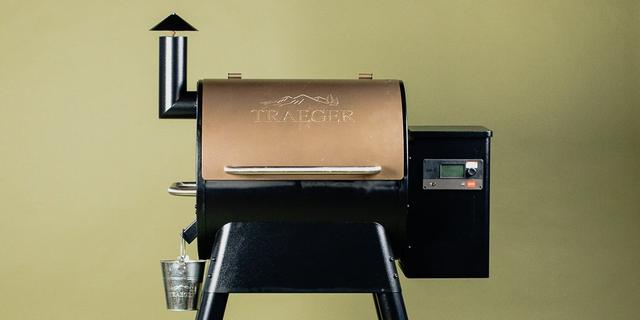
In conclusion, Traeger pellets are an essential component for grilling enthusiasts who want to enhance the flavor of their food. With a wide variety of flavors to choose from and 100% natural hardwood composition, Traeger pellets offer a delicious and clean burning fuel source for your Traeger grill. The lifespan of the pellets can vary depending on factors such as temperature and hopper size, but on average, a 20-pound bag of pellets can last for around 20 hours of cooking time at 225 degrees Fahrenheit. To ensure the longevity and performance of your pellets, proper storage in a cool, dry place is crucial. Additionally, purchasing high-quality pellets from a reputable source will guarantee the best flavor and minimize ash production during cooking. By following these tips and experimenting with different pellet flavors, you can elevate your grilling experience and become the ultimate grill master.
In conclusion, a full hopper of pellets in a Traeger grill set at 225 degrees Fahrenheit can last for approximately 8-10 hours. However, factors such as weather conditions and pellet quality may slightly affect the burn time.
Learn More About Grilling
If you want to learn more about grilling, check out these other helpful resources!


